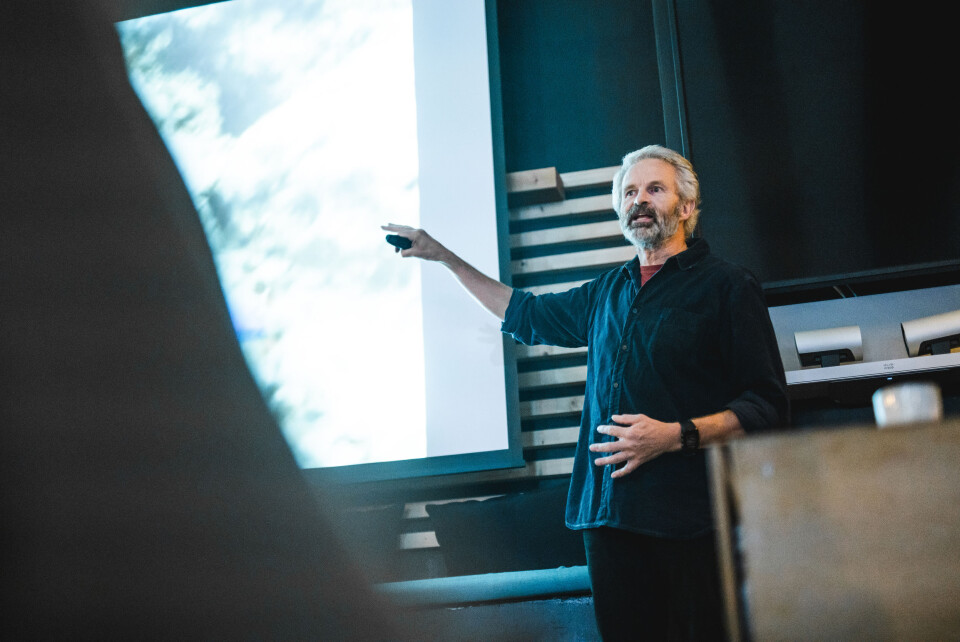
The future of coral reefs
This Saturday the Climate Festival dedicated an evening to the International Year of the Reef.
From 6th to 9th of September the Climate Festival invited Trondheim to a green celebration, with a wide range of events, workshops and debates, with the hope of engaging more people in the climate discussion. The Climate Festival dedicated the Saturday evening to discussion, music and coffee, to celebrate coral reefs all over the world as the wonders that they are.
The International Year Of the Reef

The idea of this event came at an early stage in the planning, after learning that The International Year of the Reef is held for the third time this year, previously being held in 1997 and 2008. The Climate Festival wanted to participate in this celebration.
– The International Coral Reef Initiative is responsible for the years dedicated to shine light on the condition of the coral reefs, Anja Keilen from the Climate Festival explains.
Since the last International Year of the Reefs, dramatic changes has occurred on the world heritage, the Great Barrier Reef, where warmer and more acidic water caused more than 90 % of the reef to bleach in 2016. It was also affected by the weather phenomenon El Niño, that caused extreme water temperatures.
– Luckily this incident got a lot of media attention. We’re hoping that people want to learn more about coral reefs and how vulnerable they are to climate change, she explains further.
The Climate Festival wanted to host an event celebrating the International Year of the Reef, and invite people in Trondheim to a pleasant evening with pizza and live music, even if the subject may be gloomy.
– The most important thing for us was to give people an evening where they could learn about coral reefs and why it’s important to take care of them!
Mass bleaching in tropical waters
Professor Trond Amundsen at NTNU researches marine animal behaviour. He has for some time worked with the Great Barrier Reef, studying marine life reproductivity. Today the tropical coral reefs of the world face pretty dramatic threats, and are estimated to be dead in 50 years.
– Most reefs are in countries with growing populations and low income per capita, which results in limited resources to study and protect the coral reefs, he explains to the audience.
Tropical coral reefs are home to about 7,000 species and 25 % of all marine fish. If all this were to disappear, it would have severe consequences for the rest of the world. The last three years have proved climate changes’ effect on coral reefs, where warmer waters and weather phenomena cause tropical corals to bleach. Essentially they die, and leave no algae or shelter to the species relying on them.
– Coral bleaching is not new, what is new is massive scale bleaching, Amundsen explains referring to the massive bleach events since 2016.
Though the world is making progress and promises when it comes to tackling climate changes, Amundsen states that the Paris Agreement still just would postpone the inevitable by 13 years.
– I can only hope science is wrong, but we should face the reality right now.
Local reefs
Johanna Järnegren from the Norwegian Institute for Nature Research on the other hand, researches cold water reefs, like the ones just out in the Trondheim fjord.
– Something most people probably don’t know, is that there are coral reefs in the Trondheim fjord as well. The world's biggest cold water coral reef resides in Norwegian waters, so the International Year of the Reef is just as relevant for us as in tropical countries, Anja Keilen adds.
Järnegren explains how the cold water reefs resides much deeper in the ocean than the ones more commonly recognized in tropical water. The reefs create complex systems on an otherwise flat and barren seabed, making habitat for thousands of other species.
– Increased amounts of carbon dioxide cause what we call ocean acidification, which decreases coral growth and structure, Järngren says.
Ocean acidification, together with warmer waters give the cold water reefs little time to adapt, due to the quick and drastic changes.
What can we do as individuals?
At the end of the presentations it was time for questions from the audience, with the biggest one being: What can we do?
Both presenters agrees that to be aware, to gain more knowledge and to be prepared for what we know is coming, is important.
– We should be aware of what’s happening, and aware that the corals exist, especially here up north where they aren’t visible. Make them important in our minds, in other’s minds, in the minds of politicians, and in the minds of the decision makers, Järngren says.
– Everybody can do something, Amundsen states.

































